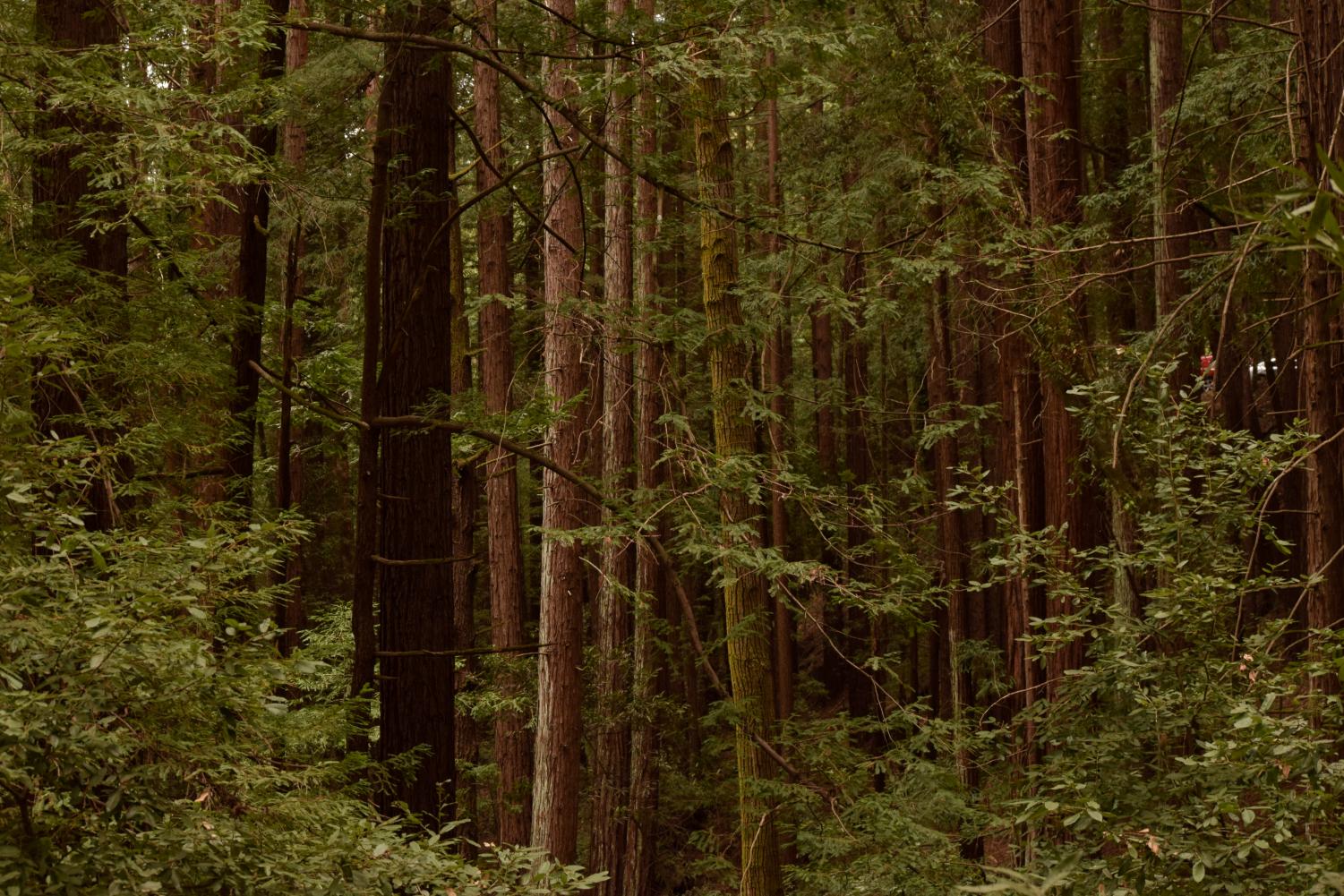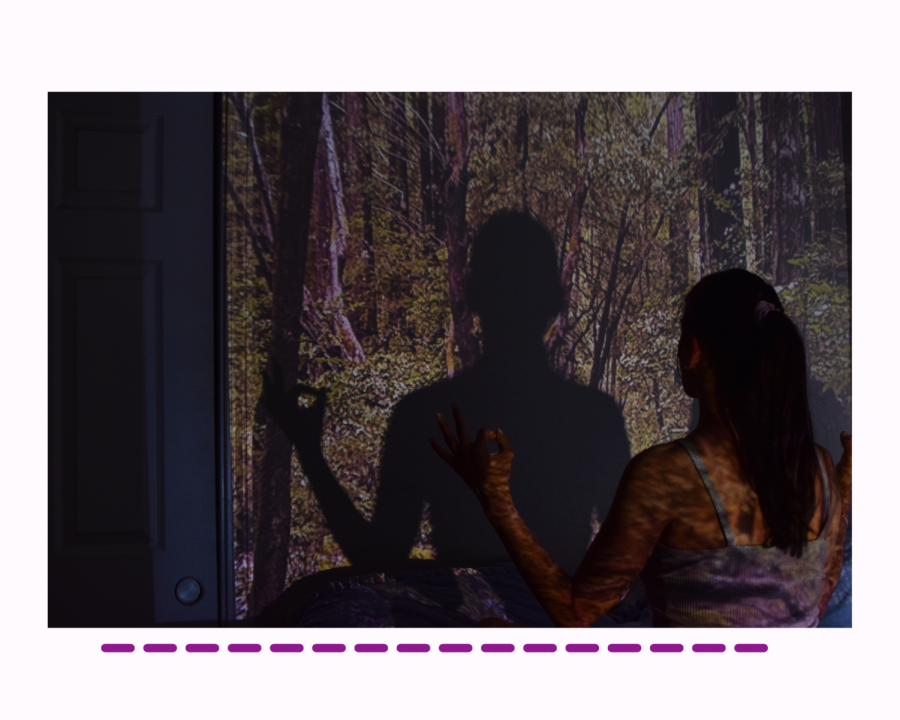The subconscious soundtrack
The concept of white noise might be foreign to some, but whether we are aware of its presence or not, it has played an important role in every single one of our lives.
To some, it might be falling asleep with the T.V. on a low volume or listening to the soft whir of the fan in your room.
There are reasons why the sound of rain softly pitter-pattering against your window, the ocean crashing onto the shore and receding, the wind gently pushing chimes together and so many other subtle noises seem to have such a huge impact on our brains.
These white noises are like a spectrum of light as they hit the glass, refracting to make a rainbow. Except in this case the refracted rainbow are different noise vibrations that help us relax, better our focus, and fall asleep.
White noise can be described as a multitude of frequencies, measured in hertz(Hz), playing at random intervals at the same amplitude, measured in decibels. White noises can include any frequency audible to the human ear, which lays between 20 Hz and 20,000 Hz.

White noise for relaxation and healing
Angela Staub, 27, is an avid listener of white noise as it helps relax her.
“I appreciate the sounds of nature to relax – that being, rain, wind and noises like moving leaves,” said Staub. “My favorite sound is light rain – the moment when a rainstorm begins without the thunder and lightning. As well, I enjoy the sound of birds and the echo of wind.”
Staub perfectly wraps together the important concept of white noise that many people seem to gloss over, or even take for granted.
To some, the soft scrape of a leaf being moved by the wind or the subtle chirp of a bird as it flies is immediately filed to their subconscious as background noise, seemingly unimportant.
To Staub these tiny moments that create these noises are important, like little gifts for her brain throughout the day, to help ease her mind and bring comfort to herself.
For those people who would file these random noises to the subconscious, try to imagine a world where these noises are actually non-existent. Imagine walking down the street and not hearing wind move leaves or birds chirping. Imagine being inside a supermarket and not hearing the soft whir of shopping cart wheels moving against the floor or the subtle crunch of potato chip bags as they are placed into people’s shopping carts.
In a study about sound therapy for those who suffer from tinnitus, it is stated that white noise creates a masking effect on our brains, which explains why we do not process them like we process normal sounds. This masking effect that white noise provides has been studied to “elicit positive emotional responses” and “provide lingering benefits” on our brain throughout the day and while we sleep.
The world would be so empty without these noises. This is why it is so powerful that once they are brought to the surface of our consciousness they can be harnessed to benefit our brains; by helping our brain relax after a long day, reduce anxiety, reducing depression and providing a sensory engagement with our brain that is both satisfying and peaceful.
In fact, these noises have been studied for centuries, branching all the way back to the Benedictine and Gregorian Monks, who could have been some of the first people on the planet to discover what is known as the ‘Solfeggio Frequencies’.
The Solfeggio Frequencies create a scale often paralleled with the concept of our body’s chakra.
At 396 Hz our root chakra is affected, which is believed to release us from fear and guilt.
At 417 Hz our sacral chakra is affected, which is believed to help us cope with change.
Then at 538 Hz our solar plexus chakra is affected, which is believed to provide a clear mind and security, as well as help repair DNA.
At 639 Hz our heart chakra is affected, which is believed to help heal us and bring balance to our lives.
At 741 Hz our throat chakra is affected, which is believed to provide clarity when we need to solve a problem.
At 852 Hz our third eye chakra is affected, which is believed to provide a clearer understanding and vision of the spiritual side of the universe.
Lastly, at 963 Hz our crown chakra is affected, which is the gateway to spiritual transformation.
The study between science and spirituality has provided many spiritual and non-spiritual individuals an outlet to help become more in tune with their body, mind and spirit.
Traditionally through the use of chimes and “singing bowls”, which are instruments specifically designed to ring at a specific frequency along the Solfeggio scale.

White noise in ASMR and music
Josh Dawson-Smith, 23, uses a unique tool known as an autonomous sensory meridian response, or ASMR, to highlight white noises they enjoy and further bring them to the surface to help them sleep.
“I have a few triggers that will get me to sleep very easily [when listening to ASMR],” said Smith.
Smith would go on to explain in-depth that it isn’t just about the physical sensations, but the audio cues that go unnoticed provide a sensation of relaxation to them.
For example, face touching is a big trigger for them when it comes to relaxing, and through the use of ASMR, Smith is able to enhance the subtle nature of the noises that are created when someone is touching their face by listening to sounds of fingers touching skin. Some refer to this as an “ear massage”.
Or even the sensation of getting a haircut. Smith uses visual ASMR to enhance the audio of things like the sensations of clippers cutting hair, spray bottles dampening hair, a razor buzzing softly and many other noises that would seemingly go unnoticed that occur when getting a haircut.
Ace Kong, 22, uses white noise as a tool to help him fall asleep, as well as background noise for when he needs to focus.
“I love melodic beats and chill music,” said Kong. “When the beat of a music drops melodically, oh man, it hits the soul and makes me vibe, it’s very soothing and relaxing. Now, you can’t have it on blast, it needs to be background music, low but enough to listen and relax as background noise.”
Kong went on to describe how there are specific noises and instruments he likes to find when he’s searching for something to put on as background noise to help him focus or sleep. The genre of music that Kong explains he heavily leans towards when he wants to sleep is Lo-Fi, or low-fidelity music. Lo-Fi has been a rising genre in the music industry, popular for its calming nature and use of white noise.
Typically Lo-Fi music is created around the level of 10,000 Hz, which is right around the frequency where our brain begins to not respond to it as much as lower frequencies, making it a perfect sound to listen and relax to when you need to focus on something else. As well as making a great spot to mix white noises in to enhance the purpose of creating a sound that requires low effort to listen to.
“I think there’s something special about what “Lo-Fi” really is,” said Shiny Mertz, a 26-year-old aspiring music producer. “For most, there’s not a lot of music. It’s often a simple beat with a really static-heavy filter. But that’s only a fraction of what is prominent in the Lo-Fi scene.”
From raindrops to T.V. static, to sound bites from T.V. shows and remixes of music to bring it to a frequency low enough that our brain can relax while listening to it, or high enough that our brain begins to not respond to the sound as much so we can focus. Lo-Fi has been many people’s introduction to the meditative aspect of white noise and ambiance.
“I’ve used white noise and ambient sounds in my stuff,” said J.T. Oertel, a 28-year-old music producer. “I think it adds a lot in a subtle way, like you’re not really focusing on it but if it was taken out you’d notice… you almost never have complete silence, there’s always something like the hum of an appliance or wind outside.”
Oertel suggests the Ambient Sleeping Pill radio as a tool or starting place for anyone wanting to start their journey into white and ambient noise music to listen to.
So let’s take that journey, unclench your jaw, rest your shoulders, relax your eyes and put on white noise to let your mind, body and spirit take a break from the world for a couple of minutes. You deserve the rest.

Lyn Brook (they/them) will be acting as the copy editor this semester for the magazine. They are a journalism (print/online) major with a religious studies...


